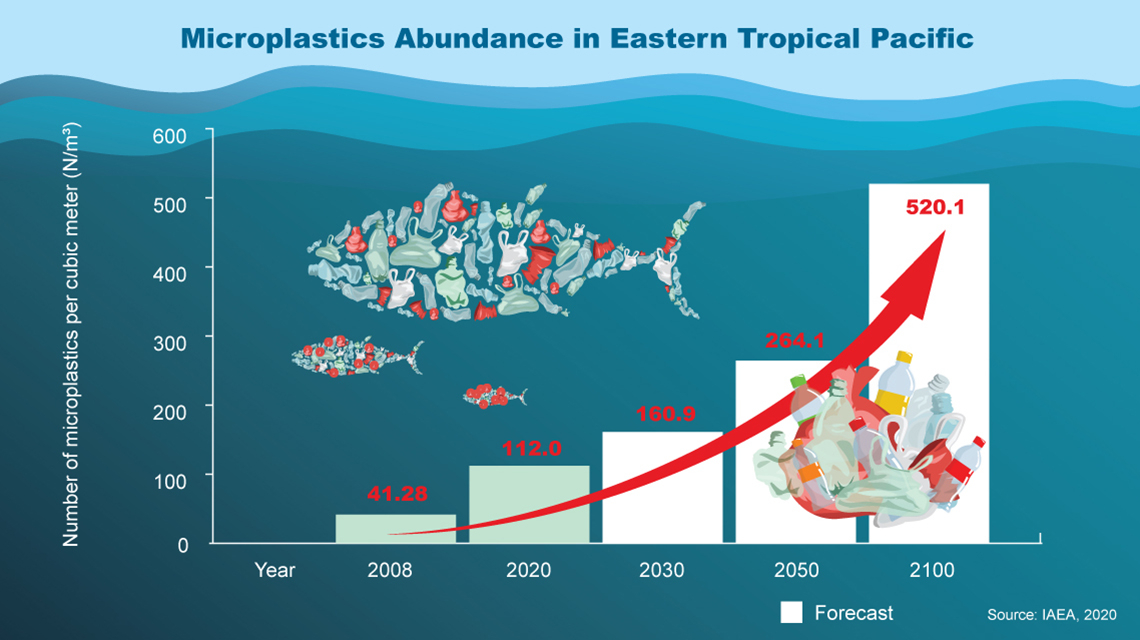We celebrate World Oceans Day at a time when about 8 million tons of plastic waste are ending up in the oceans each year, damaging ecosystems and wildlife, according to the UN Environment Programme. The major challenge scientists and policy makers face today is a lack of knowledge on the biological impacts of microplastics in marine organisms. To help anticipate and hence better address marine pollution scenarios in the eastern tropical Pacific Ocean, scientists from the IAEA and Ecuador have recently completed the first-ever, decade-long study on plastic particle abundance in the coastal waters of Ecuador. The study results form a baseline for future research on pollution of marine ecosystems.
The eastern tropical Pacific Ocean is home to some of the world’s most unique marine reserves, including the Galapagos Islands in Ecuador, the Cocos Island in Costa Rica and the Coiba National Park in Panama – all included in UNESCO’s list of World Heritage Sites. “The research has revealed that the microplastic pollution in the eastern tropical Pacific Ocean is set to continue to increase in the coming decades,” said Peter Swarzenski, Acting Director of the IAEA Environment Laboratories. Plastic particles below 5 mm in length are called microplastics, which can be consumed by marine organisms and thus make their way to the food chain, as a recent IAEA study has revealed.
The amount of microplastics in the region is expected by 2030 to increase some 3.9 times compared to 2008 levels. By 2050, this quantity could almost double again, rising by 6.4 times compared to 2008 levels, and by 2100, the amount of plastics in the ocean is projected to be more than 10 times higher than in 2008 unless action is taken to change this trajectory.









